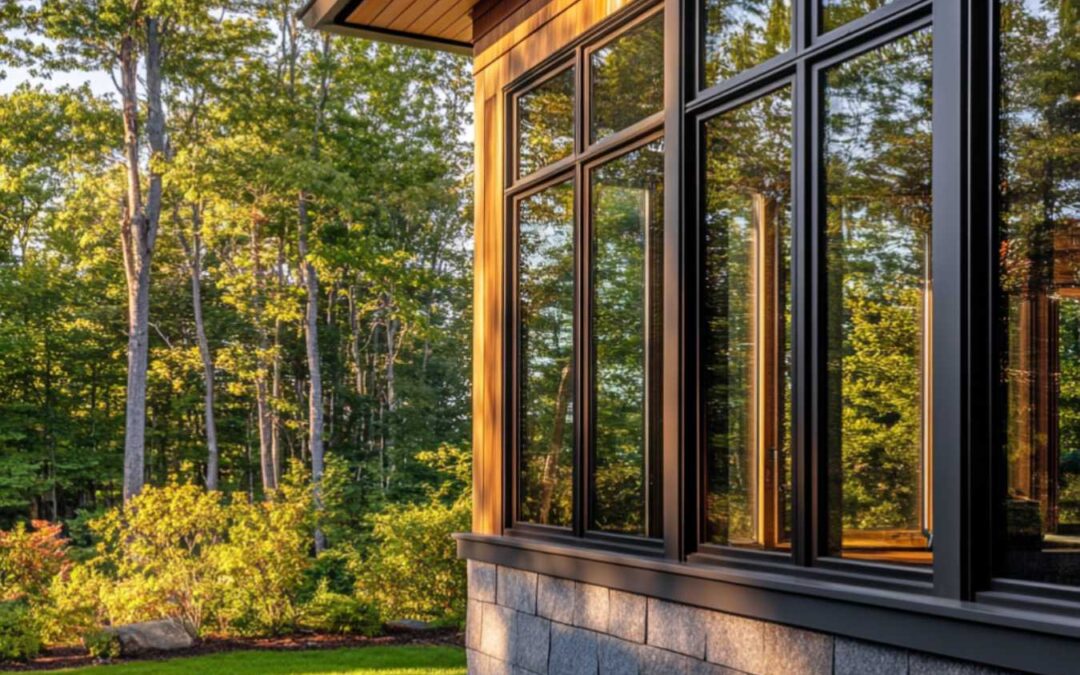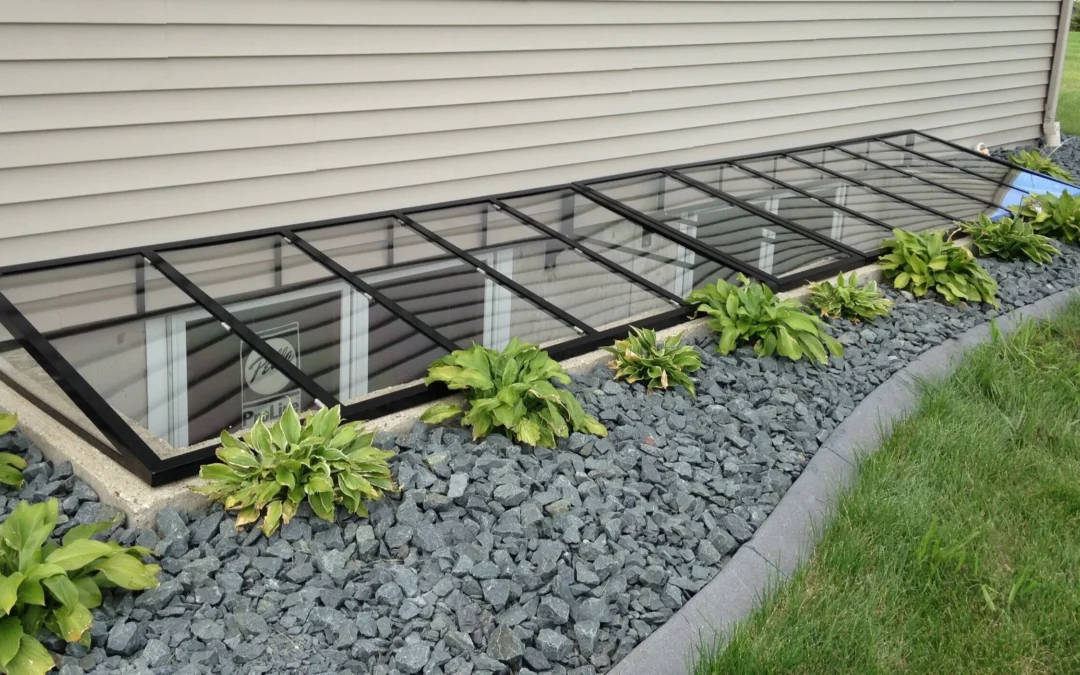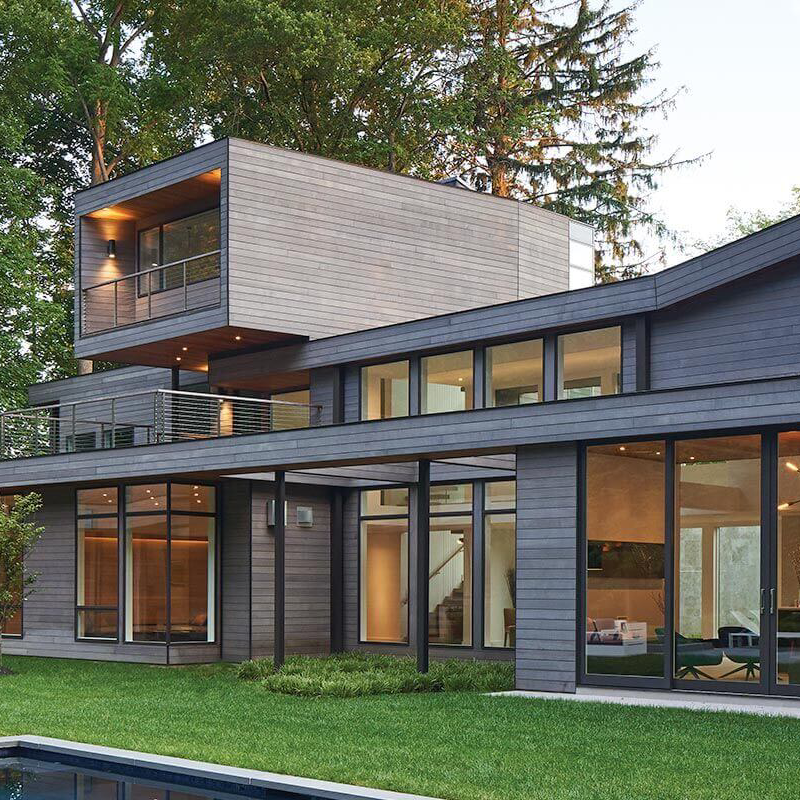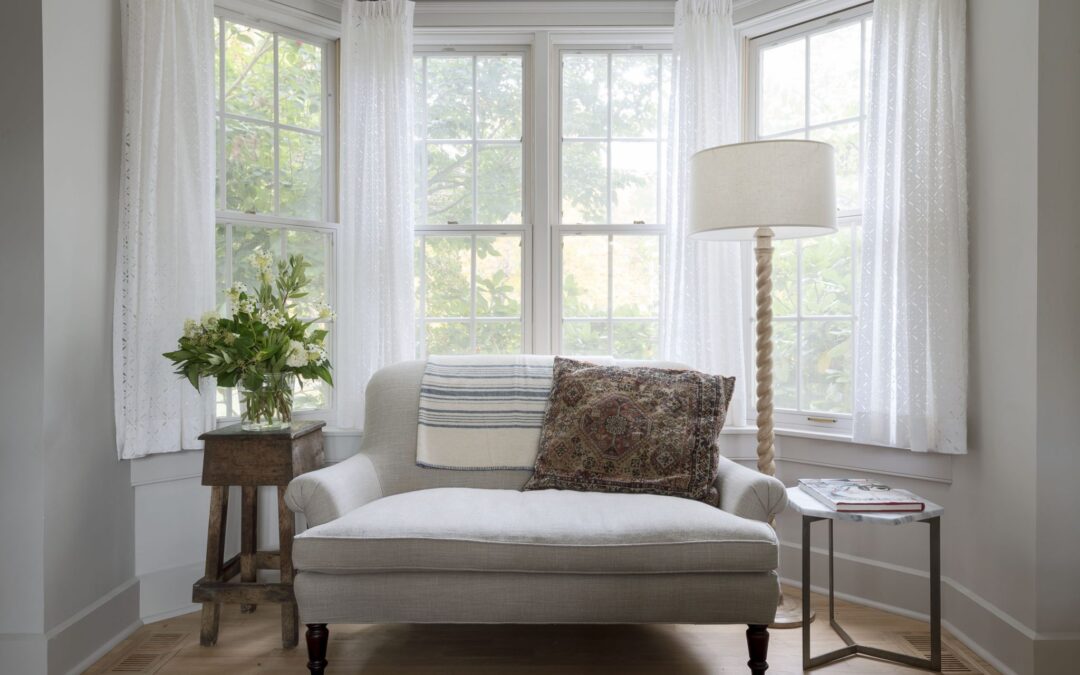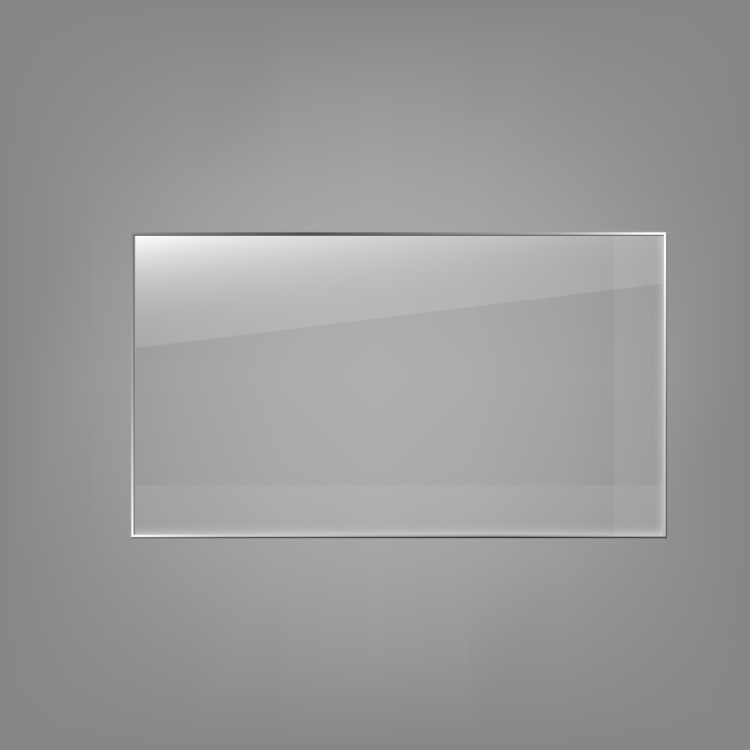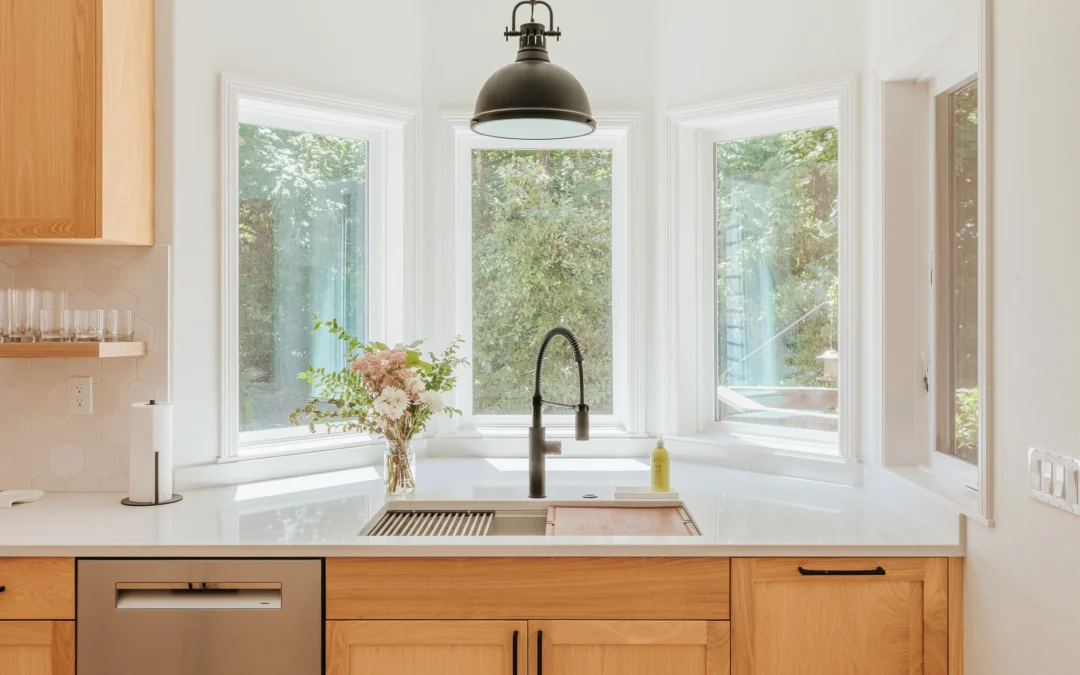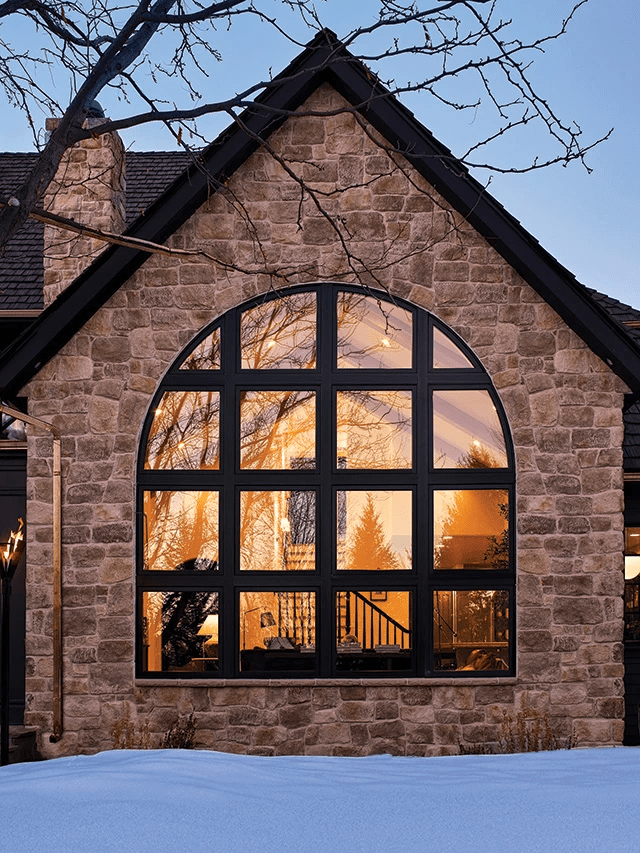Understanding Why Every Modern Home Needs Low-E Coating for Their Windows🏘️🪟
When upgrading your home’s windows, you will inevitably encounter the term “Low-E coating.” This is not just technical jargon; it represents one of the most critical advancements in modern window technology. Low-E, or low emissivity, refers to a microscopic, transparent coating applied to window glass to dramatically improve energy efficiency. By reflecting infrared heat while allowing natural, visible light to pass through, low-e coating helps regulate indoor temperatures, keeps your home comfortable year-round, and significantly reduces soaring energy costs.
At Imperium Exteriors, we believe that understanding your windows is key to making a smart investment. This comprehensive guide will break down exactly what low-e coating is, how it functions in both summer and winter, and why choosing the right type and placement of this technology is essential for homeowners, especially those dealing with extreme climates like Texas.
1. What Exactly is Low-E Coating?🧐🧑🏫
“Low-E” stands for low emissivity, which is a term that refers to how a material emits or radiates energy in the form of heat. A window with a low-e coating is designed to possess low emissivity, meaning it reflects radiant heat back toward its source instead of allowing it to pass through the glass.
The coating itself is a microscopically thin, virtually invisible layer of metallic particles (often silver) applied to the glass. It’s engineered to perform a dual-action mechanism:
- Allows Light In: It permits natural, visible light waves to pass through the glass.
Reflects Heat Out/In: It reflects longer wavelength infrared (IR) heat and ultraviolet (UV) rays, providing a thermal barrier without sacrificing visibility.
2. The Dual-Action Mechanism of Low-E Coatings🦾⚙️
Low-E coatings minimize the amount of heat that is transferred through the glass, making your window a thermal powerhouse in all seasons:
- In the Summer (Reflects Out): The coating reflects the sun’s high-intensity UV and infrared (heat) rays away from your home, preventing excess solar heat from entering. This dramatically reduces the strain on your air conditioning system, keeping your home cooler and slashing cooling expenses.
- In the Winter (Reflects In): The coating reflects the long-wavelength heat generated inside your home (from your furnace, fireplace, or body heat) back into your living space. This minimizes heat loss through the window, keeping your home warmer and cutting down on heating costs.
By reducing the workload on your HVAC system, Low-E windows not only save energy but also contribute to a more sustainable home and extend the life of your heating and cooling equipment.
3. Hard-Coat vs. Soft-Coat Low-E: Choosing the Right Type🤨👉
When selecting windows, you will encounter two main methods for applying Low-E coating. Choosing the right method is critical for maximum performance based on your climate:
|
Type of Coating |
Application Method |
Best Climate Use |
Performance Notes |
|
Hard-Coat Low-E (Pyrolytic) |
Fused onto the glass at high temperatures during manufacturing. |
Colder Climates |
Durable, but slightly less efficient at blocking heat. Priority is usually heat retention. |
|
Soft-Coat Low-E (Sputter-Coated) |
Applied in a vacuum chamber after the glass is produced. |
Warmer Climates (Industry Standard) |
Offers superior energy efficiency and better UV blockage. Must be sealed inside the insulated glass unit (IGU). |
For regions with significant cooling demands, like Texas, Soft-Coat Low-E is the industry standard for replacement windows, as it provides the best thermal performance for reflecting heat outward.
4. The Strategic Placement of Low-E Coating (Surfaces 1-4)📐📏
In modern insulated glass units (IGUs) with two or more panes, the low-e coating is strategically applied to maximize its thermal benefit. The panes have four numbered surfaces:
- Surface 1: Outer surface (exposed to the elements).
- Surface 2: Inner side of the exterior pane.
- Surface 3: Outer side of the interior pane.
- Surface 4: Innermost surface (exposed to the room).
For Warm Climates (like Texas), Low-E coating is most effective when applied to Surface #2. This placement maximizes energy efficiency by catching and reflecting the sun’s heat before it enters the air space between the panes, minimizing the heat that makes it into your home.
5. 5 Key Benefits of Low-E Windows ✅🔝
The advantages of investing in windows with Low-E coating extend well beyond simple temperature control, making them a wise long-term investment:
- Energy Savings: Reduces heat transfer, drastically lowering both heating and cooling costs year-round.
- UV Protection: Blocks up to 98% of harmful UV rays that can prematurely fade furniture, flooring, window treatments, and artwork.
- Improved Comfort: Helps maintain consistent, comfortable indoor temperatures by eliminating “cold spots” near windows in the winter and “hot spots” in the summer.
- Reduced Condensation: By keeping the interior pane temperature closer to the indoor air temperature, Low-E coating minimizes moisture buildup on the glass in extreme conditions.
- Increased Home Value (ROI): Energy-efficient features are highly valued by homebuyers, increasing your home’s appeal and resale value.
6. The Texas Difference: SHGC and Low-E🤠🐂
To truly understand why low-e coating is critical in a hot climate, you must look at the Solar Heat Gain Coefficient (SHGC).
- SHGC Defined: This value measures how much solar radiation is admitted through a window. A lower SHGC means the window blocks more solar heat—a crucial factor for Texas homes fighting intense heat.
- Low-E’s Impact: The right Low-E coating (Soft-Coat on Surface 2) drastically lowers the SHGC of a window. By reflecting infrared radiation, the window keeps your home cooler, preventing solar heat from contributing to your interior temperature and allowing your AC unit to run less often. For Texas homeowners, prioritizing a window with a low SHGC achieved by multiple layers of low-e coating is the most important specification.
Why Imperium Exteriors Recommends and Installs Premium Low-E Windows 🥇🧑🔧
Installing high-performance windows requires expertise in both the product and the local climate. Choosing the wrong Low-E coating or placing it incorrectly can compromise your energy savings.
- Climate-Specific Expertise: We specialize in Soft-Coat Low-E (often 2- or 3-layer) specifically rated for the intense solar heat of the Texas region. We guarantee the Low-E coating we install provides the lowest necessary SHGC for your home.
- Top-Tier Brands: Imperium Exteriors offers multiple top-of-the-line window brands, including Kolbe, Marvin, Andersen, and Provia. Each brand is selected for its superior thermal performance and advanced Low-E glass technology.
- Flawless, Warranted Installation: Our skilled team ensures a flawless installation process, maximizing the window’s energy efficiency, sealing the thermal envelope, and guaranteeing your investment is backed by both the manufacturer and our craftsmanship.
A Long-Term Investment in Comfort and Savings! 🚀💰
Installing windows with the right Low-E coating is the single smartest move you can make to boost your home’s energy efficiency, comfort, and value—especially in a climate like Texas. By choosing a premium Low-E solution, you are not just getting a new window; you are securing protection, lowering utility bills, and making a powerful, long-term investment.
It’s time to stop letting heat drain your energy budget!
🖱️Click Here to Schedule Your Free, No-Obligation Consultation: Contact Imperium Exteriors today.
📱Call us at: (737) 376-5800
💻Visit Our Website: imperiumexteriors.com to explore our top-tier energy-efficient window brands.
Choose Imperium Exteriors—and invest in the ultimate thermal performance for your home! 🏠🔝
🤔Frequently Asked Questions (FAQ) Low-E Coating 🤔
Q: Does Low-E coating block natural light from entering my home?
A: Modern Low-E coatings are designed to be almost completely transparent to visible light. While highly advanced coatings (like triple-layer Low-E) may slightly reduce light transmission, the difference is typically unnoticeable to the eye. They block harmful UV and infrared heat, but not the light you want.
Q: Can I add Low-E coating to my existing windows?
A: You cannot replicate the factory-applied quality and thermal performance of true Low-E coating. There are aftermarket Low-E films available, but they offer significantly lower performance, have a shorter lifespan, and can sometimes trap moisture, potentially damaging the glass seal. For genuine energy savings, full window replacement is recommended.
Q: Is Low-E coating necessary if I have high-quality blinds or curtains?
A: Yes, Low-E coating is crucial. Blinds and curtains only block heat after it has already passed through the glass and entered your home. Low-E coating reflects the heat before it passes through the glass, preventing the heat from entering your home in the first place, offering a far superior energy efficiency solution.
Q: How can I tell if a window has Low-E coating?
A: There is no easy visual test, but a professional can use a Low-E meter. Homeowners can sometimes hold a lighter or match up to the glass; the reflection of the flame will appear a slightly different color (often blue or purple) on the pane where the metallic Low-E coating is applied.
Ready to Upgrade Your Windows?
Don’t wait to experience the transformational power of new windows. Contact Imperium Exteriors, your trusted Central Texas window replacement company, to explore our top-of-the-line window options and get a free consultation today!
📞 Call us at (737) 376-5800
🌐 **Visit imperiumexteriors.com
Cover for Egress Window: 5 Critical Reasons Why Every Austin Home Needs an Egress Window Well Cover ⚠️
The Unsung Hero of Your Basement🦸♂️🏠 Egress windows are the unsung heroes of basement living. They flood subterranean spaces with natural light, provide essential ventilation, and, most importantly, serve as a critical emergency exit in case of a fire or other home emergency. But for all their benefits, the open…
7 Costly Mistakes of DIY Window Replacement: Why You Need Imperium Exteriors 🚫🛠️
The DIY Illusion: Why Attempting Your Own Window Replacement is a Costly Gamble🌀🎲 Searching for guides on how to window replacement yourself? Stop right there. While countless online tutorials make window installation look like a simple weekend project, the reality is that DIY window replacement is one of the riskiest,…
Maximize Space with A Bay Window Area: The 5 Essential Benefits of the Bay Window Area for Austin Homes
The Perfect Nook: Maximizing Light and Space with a Bay Window Area☀️🪟 Howdy, Austin and Central Texas homeowners! Austin homes have a unique charm, blending classic architectural styles with a deep appreciation for the natural light and stunning views our landscape provides. If you’re looking for a renovation that instantly…
5 Critical Ways a Single Pane of Glass Steals Your Amazing Austin Home’s AC
The Transparent Thermal Leak: Why That Single Pane of Glass is Costing You a Fortune👓💸 Howdy, Austin and Central Texas homeowners! Austin is known for its incredible architecture, unique neighborhoods, and, let’s be honest, its legendary heat. If your home was built before the 1980s, there\'s a good chance it…
Stop the Drain with Single Pane Windows: 7 Essential Reasons to Upgrade Your Windows in Austin Now
The Texas Tax: Why That Old Single Pane Window is Costing You a Fortune💰 Howdy, Austin homeowners! We love the character and history woven into our Central Texas homes, from 1930s bungalows to mid-century ranches. However, if your home still has original single pane windows, they are the single biggest…
Let the Light In: Why Large Windows Are a Bright & Brilliant Idea for Austin Homes in 2025
Large Windows: Transforming Your Austin Home with Light and Views🌄🌞🪟 Howdy, Central Texas homeowners! If you\'re daydreaming about giving your cherished home a dramatic upgrade that combines modern elegance with the breathtaking beauty of the Texas landscape, then installing large, custom windows might be the transformative solution you didn\'t know…
The 5 Crucial Factors Determining the Cost of Window Replacement in Austin, TX
Navigating the Cost of Window Replacement: A Guide for Austin Homeowners🧭💰 Replacing your home’s windows is one of the single best investments you can make to immediately improve energy efficiency, boost aesthetic appeal, and increase resale value. However, the cost of window replacement is not a simple calculation. For homeowners…
7 Ultimate Ways a Bay Window for Kitchen Instantly Boosts Light and Value 💎🍽️
Designing the Perfect Kitchen: The Ultimate Power of a Bay Window for Kitchen🪟🍳 The kitchen is the heart of the home, and its design dictates functionality, mood, and resale value. If you\'re looking for one single upgrade that instantly transforms the space, adds measurable square footage, and dramatically increases natural…
The Genius Guide: Window Shapes for Reinventing Your Amazing Austin Abode in 2025
More Than a Pane of Glass: The Power of Window Shapes🖼️✨ Windows are more than just a source of light and a view to the outside; they are a defining feature of your home\'s character and architectural style. The shape of a window can influence everything from the amount of…
Single Hung Window- The Budget-Smart Classic: 5 Reasons It’s Perfect for Your Home
Understanding the Single Hung Window: Simplicity Meets Practicality💡 When planning a window replacement project, homeowners often prioritize energy efficiency and cost-effectiveness. The single hung window offers a compelling combination of both, making it a budget-smart classic for residential homes. Defined by its straightforward operation—where only the bottom sash moves vertically…

